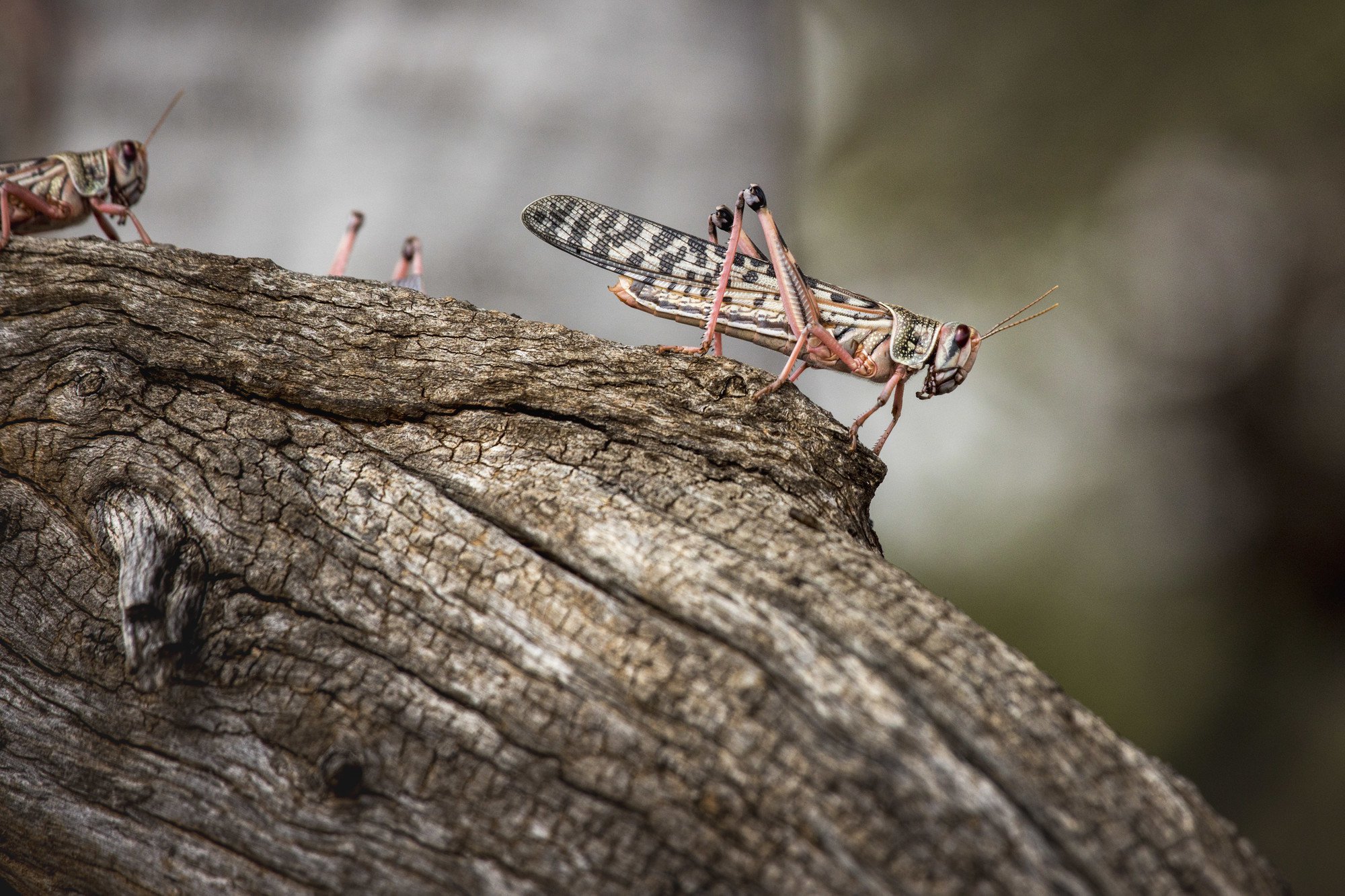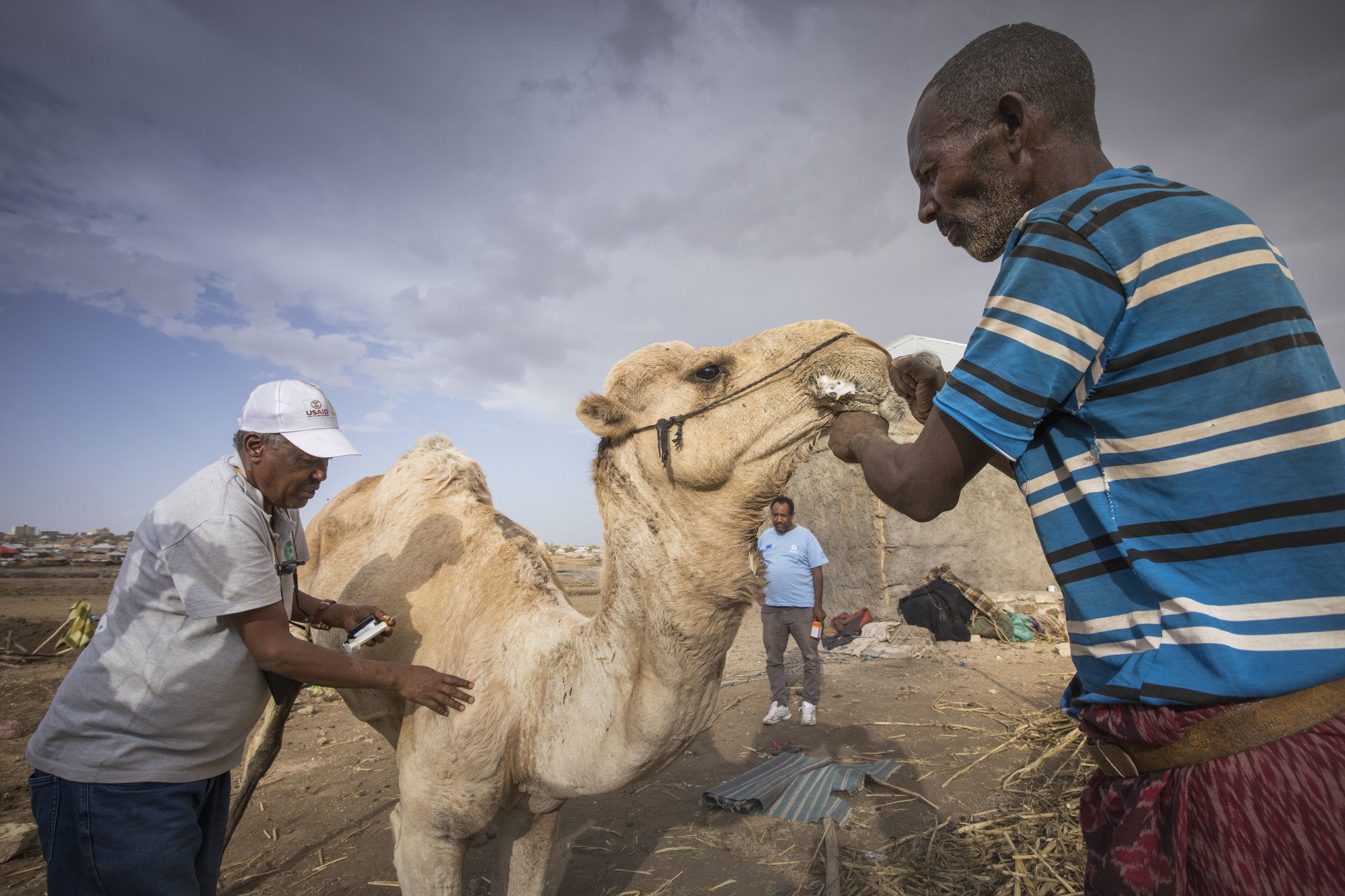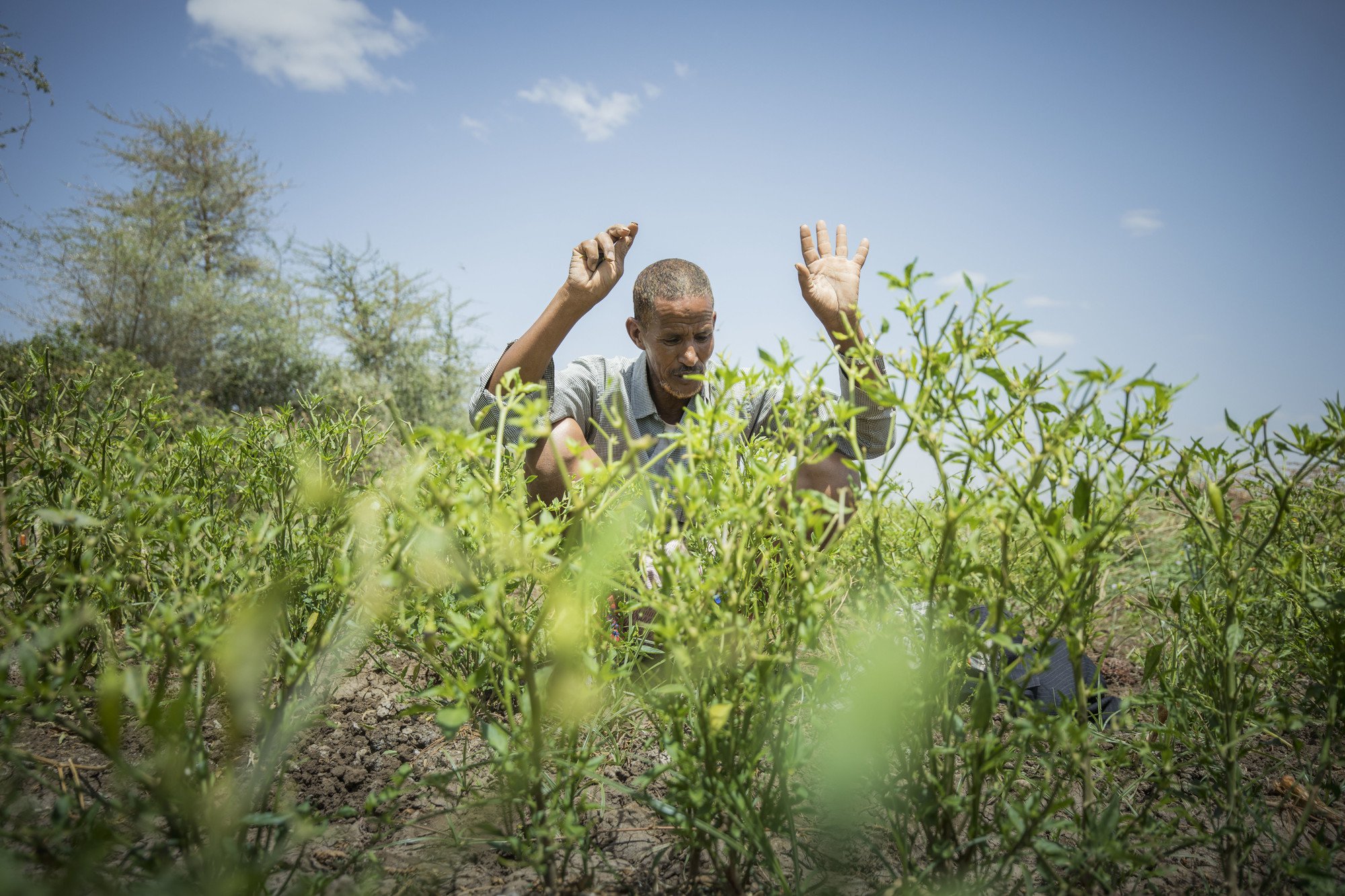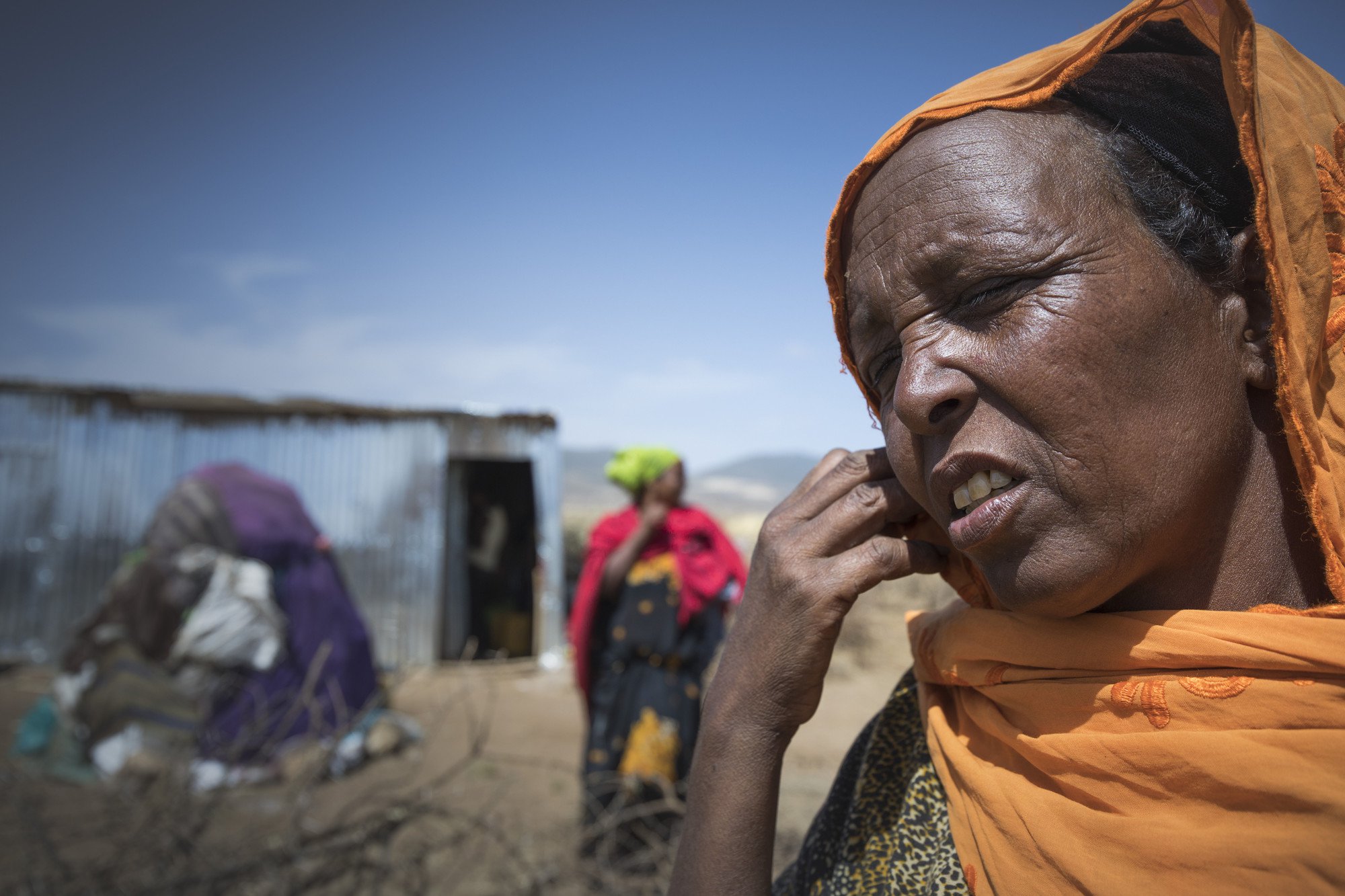In an area already suffering from drought and other weather shocks, farmers and herders struggle to survive an upsurge in desert locusts.
Ismael Muhammad and his camel, Addawee, are walking home with a load of dried-up sorghum on Addawee’s back. Muhammad says he harvested it all despite the fact it is not mature because he fears his sorghum will be eaten by locusts that have descended on this part of Ethiopia’s Somali Region.
"They came with the wind from over the mountains,” Muhammad says. “They left us with nothing to eat for the coming months.” He says he hopes to feed the sorghum to camels and cattle to keep them from starving.
“Life used to be good, with enough to eat for all of us,” Muhammad, who is about 40, explains. “Now we are just surviving. I don't know how much longer we can survive."
The Somali Region has been suffering a severe upsurge in desert locusts since last June. Most of the crops in this region have been lost to drought or locusts. Many, like Muhammad, have harvested too early in a desperate attempt to save their crop. Grazing lands for camels, cows, goats, and sheep are barren, forcing pastoralist families and their livestock to travel large distances to look for pasture. People here are on the brink of hunger and are at risk of a huge loss of livestock due to lack of feed.

The Ethiopian government is trying to contain the locusts by spraying vast areas with insecticide, but that is also a threat to the health of cattle and people. In densely populated areas they use a milder insecticide, but that only kills 50 percent of the desert locusts.
In the last weeks Oxfam has been assessing the situation together with government and others in the Jijiga area where Muhammad lives, and the results are alarming: Locusts invaded 72,000 hectares (176,400 acres) of grazing land, and destroyed between 30 percent and 90 percent of the pasture. The situation is also bad for farmers: The rainy season is due to start in late March, but due to widespread crop losses, farmers do not have seeds available.
Crucial weeks ahead
Addawee (it means “White One” in the local Somali language) is Muhammad’s last surviving camel. She is suffering from an infected wound on her mouth, from eating cactus leaves. Muhammad is worried about her. “Losing a camel is like losing a child,” he says, adding “We depend on her for our transport."
“With no grass around, the camels start eating the cactus leaves,” says Million Ali, a food security and livelihood expert who works for Oxfam in the Somali Region. “The thorns cause infections in their mouths and could be lethal because they stop eating.”

Ali is concerned about the situation facing pastoralists. "I used to work here as a veterinarian, so most cattle farmers know me and I know them. It hurts my heart to see them suffering to keep their herds alive. They have to go farther away to find grazing grounds and some even have to sell their animals because they cannot cope anymore.”
Ali injects Addawee with an antibiotic and assures Muhammad that she will be better in a couple of days.
Ali is concerned about how farming and pastoralist families will endure as the rainy season approaches. Recent drought in this area, as well as political conflict, have displaced people and many farmers and pastoralist families have suffered losses and lack food. “The coming weeks are decisive,” he says. “If the rains come, farmers need seeds because they were not able to save seeds from their last, immature crop. And they need support to cover the hunger gap that will start very early this year due to drought and the locusts. They need food for their families but also for the cattle. They need cash to buy the basics for their survival.”
Desert locusts swarming
Seasonal rains, if they arrive, may also cause more locusts eggs to hatch, further endangering newly planted crops and pasture and adding to the locust population now swarming across large areas of Uganda, Ethiopia, Kenya, Tanzania, South Sudan, and Somalia. For Kenya, this is the worst locust outbreak in 70 years, and something not seen in Somalia and Ethiopia at this scale for 25 years. The swarms can contain hundreds of millions of insects and can move 150 kilometers (90 miles) in a day.

Some of the areas hit by locusts are already facing hunger, with over 22.8m people living in acute or severe food insecurity as a result of consecutive weather-related shocks. Huge droughts, flash floods, unreliable rains, and conflict have cut people’s ability to access food and left them very vulnerable to future shocks. The UN has warned that a food crisis could be looming in East Africa if the outbreak is not brought under control.

Locust swarms can be as large as several hundred square kilometers and contain more than 40 million insects. A ton of locusts can eat as much as 2,500 people in one day.
Oxfam is seeking funds to help 5,000 households in the Jijiga area in Ethiopia, part of a regional response by Oxfam in Ethiopia, Somali, and Kenya.

